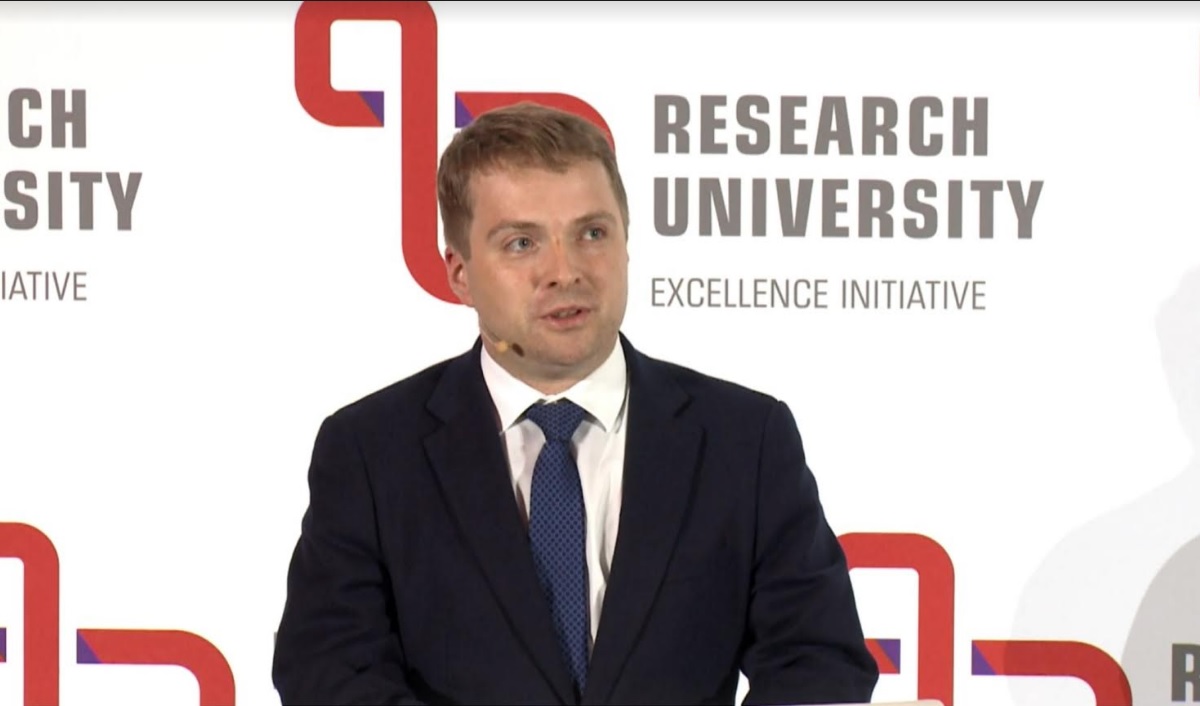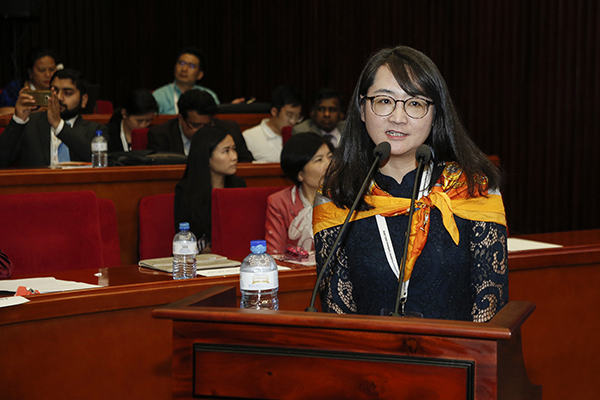QS World University Rankings
Historical and Institutional Background
The QS World University Rankings is a ranking of the world’s top 500 universities by Quacquarelli Symonds using a method that has published annually since 2004.
The QS rankings were originally published in publication with Times Higher Education from 2004 to 2009 as the Times Higher Education-QS World University Rankings. In 2010, Times Higher Education and QS ended their collaboration. QS assumed sole publication of the existing methodology, while Times Higher Education created a new ranking methodology, published as Times Higher Education World University Rankings.
Between 2004 and 2009, Quacquarelli Symonds (QS) produced the rankings in partnership with Times Higher Education (THE). In 2009, THE announced they would produce their own rankings, the Times Higher Education World University Rankings, in partnership with Thomson Reuters. After criticism from universities, THE cited a weakness in the methodology of the original rankings, as well as a perceived favoritism in the existing methodology for science over the humanities, as one of the key reasons for the decision to split with QS.
QS retained the intellectual property in the Rankings and the methodology used to compile them and continues to produce the rankings, now called the QS World University Rankings.
QS publishes the results of the original methodology in key media around the world. The first rankings produced by QS independently of THE, and using QS’s consistent and original methodology, were released on September 8, 2010, with the second appearing on September 6, 2011.
Indicators and Methodology
Data sources
The information used to compile the World University Ranking comes partly from the online surveys carried out by QS, partly from Scopus, and partly from an annual information-gathering exercise carried out by QS itself. QS collects data from universities directly and from their web sites and publications, and from national bodies such as education ministries and the National Center for Education Statistics in the US and the Higher Education Statistics Agency in the UK.
Aggregation
The data is aggregated into columns according to its Z score, an indicator of how far removed any institution is from the average. Between 2004 and 2007 a different system was used whereby the top university for any measure was scaled as 100 and the others received a score reflecting their comparative performance. According to QS, this method was dropped because it gives too much weight to some exceptional outliers.
In 2009, a column of classifications was introduced to provide additional context to the rankings tables. Universities are classified by size, defined by the size of the student body; comprehensive or specialist status, defined by the range of faculty areas in which programs are offered; and research activity, defined by the number of papers published in a five-year period. In 2011, QS began publishing average fees data for the universities it ranks.
QS publishes a simple analysis of the top 100 institutions in each of the five faculty-level areas: natural sciences, technology, biology and medicine, social sciences and the arts and humanities. These five tables list universities in order of their Academic Peer Review score. They also give the citations per paper for each institution, but the two data sets are not aggregated.
Indicators
| Indicators | Definition | Weight |
| ACADEMIC REPUTATION |
The Academic Reputation Index is the centrepiece of the QS World University Rankings® carrying a weighting of 40%. It is an approach to international university evaluation that QS pioneered in 2004 and is the component that attracts the greatest interest and scrutiny. In concert with the Employer Reputation Index it is the aspect which sets this ranking most clearly apart from any other. |
40% |
| EMPLOYER REPUTATION |
The Employer Reputation component is unique amongst current international evaluations in taking into consideration the important component of employability. The majority of undergraduate students leave university in search of employment after their first degree, making the reputation of their university amongst employers a crucial consideration |
10% |
| FACULTY STUDENT |
Student Faculty Ratio is, at present, the only globally comparable and available indicator that has been identified to address the stated objective of evaluating teaching quality. Clearly it is not a satisfactory as a qualitative classroom evaluation as might be considered for a domestic teaching assessment, but it does speak to the notion of “commitment to teaching”, which ought to correlate strongly, if not completely with the level of teaching quality. |
20% |
| CITATIONS PER FACULTY |
Citations, evaluated in some fashion to take into account the size of institution, are the best understood and most widely accepted measure of research strength. Often calculated on a “per paper” basis, the QS World University Rankings™ has adopted a “per faculty member” approach since its inception in 2004. The Citations per Faculty score contributes 20% to the overall rankings score. |
20% |
| CITATIONS and PAPERs |
Papers and Citations, evaluated in some fashion to take into account the size of institution, are the best understood and most widely accepted measure of research strength. Often calculated on a “per paper” basis, the QS World University Rankings® has adopted a “per faculty member” approach since its inception in 2004. The Citations per Faculty score contributes 20% to the overall rankings score. |
– |
| INTERNATIONAL FACULTY |
Globalisation has had a major influence on the landscape of higher education and whilst, in some ways, universities may at one time have been pioneering in this regard the level to which ease of mobility has affected them is profound. International strategies at universities are much more than simply the numbers of international faculty and students, but these serve as strong measures of institutions with advanced strategies in this area. |
5% |
| INTERNATIONAL STUDENTS | 5% |
 Dr. habil György Fábri (1964) is an habilitated associate professor (Institute of research on Adult Education and Knowledge Management, Faculty of Education and Psychology of Eötvös Loránd University), head of the Social Communication Research Group. Areas of research: university philosophy, sociology of higher education and science, science communication, social communication, church sociology. His monograph was published on the transformation of Hungarian higher education during the change of regime (1992 Wien) and on university rankings (2017 Budapest). He has edited several scientific journals, and his university courses and publications cover communication theory, university philosophy, science communication, social representation, media and social philosophy, ethics, and church sociology.
Dr. habil György Fábri (1964) is an habilitated associate professor (Institute of research on Adult Education and Knowledge Management, Faculty of Education and Psychology of Eötvös Loránd University), head of the Social Communication Research Group. Areas of research: university philosophy, sociology of higher education and science, science communication, social communication, church sociology. His monograph was published on the transformation of Hungarian higher education during the change of regime (1992 Wien) and on university rankings (2017 Budapest). He has edited several scientific journals, and his university courses and publications cover communication theory, university philosophy, science communication, social representation, media and social philosophy, ethics, and church sociology.
 Dr. Mircea Dumitru is a Professor of Philosophy at the University of Bucharest (since 2004). Rector of the University of Bucharest (since 2011). President of the European Society of Analytic Philosophy (2011 – 2014). Corresponding Fellow of the Romanian Academy (since 2014). Minister of Education and Scientific Research (July 2016 – January 2017). Visiting Professor at Beijing Normal University (2017 – 2022). President of the International Institute of Philosophy (2017 – 2020). President of Balkan Universities Association (2019 – 2020). He holds a PhD in Philosophy at Tulane University, New Orleans, USA (1998) with a topic in modal logic and philosophy of mathematics, and another PhD in Philosophy at the University of Bucharest (1998) with a topic in philosophy of language. Invited Professor at Tulsa University (USA), CUNY (USA), NYU (USA), Lyon 3, ENS Lyon, University of Helsinki, CUPL (Beijing, China), Pekin University (Beijing, China). Main area of research: philosophical logic, metaphysics, and philosophy of language. Main publications: Modality and Incompleteness (UMI, Ann Arbor, 1998); Modalitate si incompletitudine, (Paideia Publishing House, 2001, in Romanian; the book received the Mircea Florian Prize of the Romanian Academy); Logic and Philosophical Explorations (Humanitas, Bucharest, 2004, in Romanian); Words, Theories, and Things. Quine in Focus (ed.) (Pelican, 2009); Truth (ed.) (Bucharest University Publishing House, 2013); article on the Philosophy of Kit Fine, in The Cambridge Dictionary of Philosophy, the Third Edition, Robert Audi (ed.) (Cambridge University Press, 2015), Metaphysics, Meaning, and Modality. Themes from Kit Fine (ed.) (Oxford University Press, forthcoming).
Dr. Mircea Dumitru is a Professor of Philosophy at the University of Bucharest (since 2004). Rector of the University of Bucharest (since 2011). President of the European Society of Analytic Philosophy (2011 – 2014). Corresponding Fellow of the Romanian Academy (since 2014). Minister of Education and Scientific Research (July 2016 – January 2017). Visiting Professor at Beijing Normal University (2017 – 2022). President of the International Institute of Philosophy (2017 – 2020). President of Balkan Universities Association (2019 – 2020). He holds a PhD in Philosophy at Tulane University, New Orleans, USA (1998) with a topic in modal logic and philosophy of mathematics, and another PhD in Philosophy at the University of Bucharest (1998) with a topic in philosophy of language. Invited Professor at Tulsa University (USA), CUNY (USA), NYU (USA), Lyon 3, ENS Lyon, University of Helsinki, CUPL (Beijing, China), Pekin University (Beijing, China). Main area of research: philosophical logic, metaphysics, and philosophy of language. Main publications: Modality and Incompleteness (UMI, Ann Arbor, 1998); Modalitate si incompletitudine, (Paideia Publishing House, 2001, in Romanian; the book received the Mircea Florian Prize of the Romanian Academy); Logic and Philosophical Explorations (Humanitas, Bucharest, 2004, in Romanian); Words, Theories, and Things. Quine in Focus (ed.) (Pelican, 2009); Truth (ed.) (Bucharest University Publishing House, 2013); article on the Philosophy of Kit Fine, in The Cambridge Dictionary of Philosophy, the Third Edition, Robert Audi (ed.) (Cambridge University Press, 2015), Metaphysics, Meaning, and Modality. Themes from Kit Fine (ed.) (Oxford University Press, forthcoming). Mr. Degli Esposti is Full Professor at the Department of Computer Science and Engineering, Deputy Rector Alma Mater Studiorum Università di Bologna, Dean of Biblioteca Universitaria di Bologna, Head of Service for the health and safety of people in the workplace, President of the Alma Mater Foundation and Delegate for Rankings.
Mr. Degli Esposti is Full Professor at the Department of Computer Science and Engineering, Deputy Rector Alma Mater Studiorum Università di Bologna, Dean of Biblioteca Universitaria di Bologna, Head of Service for the health and safety of people in the workplace, President of the Alma Mater Foundation and Delegate for Rankings.

 Ben joined QS in 2002 and has led institutional performance insights function of QS since its emergence following the early success of the QS World University Rankings®. His team is, today, responsible for the operational management of all major QS research projects including the QS World University Rankings® and variants by region and subject. Comprising over 60 people in five international locations, the team also operate a widely adopted university rating system – QS Stars – and a range of commissioned business intelligence and strategic advisory services.Ben has travelled to over 50 countries and spoken on his research in almost 40. He has personally visited over 50 of the world’s top 100 universities amongst countless others and is a regular and sought after speaker on the conference circuit.Ben is married and has two sons; if he had any free time it would be spent reading, watching movies and skiing.
Ben joined QS in 2002 and has led institutional performance insights function of QS since its emergence following the early success of the QS World University Rankings®. His team is, today, responsible for the operational management of all major QS research projects including the QS World University Rankings® and variants by region and subject. Comprising over 60 people in five international locations, the team also operate a widely adopted university rating system – QS Stars – and a range of commissioned business intelligence and strategic advisory services.Ben has travelled to over 50 countries and spoken on his research in almost 40. He has personally visited over 50 of the world’s top 100 universities amongst countless others and is a regular and sought after speaker on the conference circuit.Ben is married and has two sons; if he had any free time it would be spent reading, watching movies and skiing.
 Anna Urbanovics is a PhD student at Doctoral School of Public Administration Sciences of the University of Public Service, and studies Sociology Master of Arts at the Corvinus University of Budapest. She is graduated in International Security Studies Master of Arts at the University of Public Service. She does research in Scientometrics and International Relations.
Anna Urbanovics is a PhD student at Doctoral School of Public Administration Sciences of the University of Public Service, and studies Sociology Master of Arts at the Corvinus University of Budapest. She is graduated in International Security Studies Master of Arts at the University of Public Service. She does research in Scientometrics and International Relations.


 Since 1 February 2019 Minister Palkovics as Government Commissioner has been responsible for the coordination of the tasks prescribed in Act XXIV of 2016 on the promulgation of the Agreement between the Government of Hungary and the Government of the People’s Republic of China on the development, implementation and financing of the Hungarian section of the Budapest-Belgrade Railway Reconstruction Project.
Since 1 February 2019 Minister Palkovics as Government Commissioner has been responsible for the coordination of the tasks prescribed in Act XXIV of 2016 on the promulgation of the Agreement between the Government of Hungary and the Government of the People’s Republic of China on the development, implementation and financing of the Hungarian section of the Budapest-Belgrade Railway Reconstruction Project.


 He is the past President of the Health and Health Care Economics Section of the Hungarian Economics Association.
He is the past President of the Health and Health Care Economics Section of the Hungarian Economics Association.

 Based in Berlin, Zuzanna Gorenstein is Head of Project of the German Rectors’ Conference (HRK) service project “International University Rankings” since 2019. Her work at HRK encompasses the conceptual development and implementation of targeted advisory, networking, and communication measures for German universities’ ranking officers. Before joining the HRK, Zuzanna Gorenstein herself served as ranking officer of Freie Universität Berlin.
Based in Berlin, Zuzanna Gorenstein is Head of Project of the German Rectors’ Conference (HRK) service project “International University Rankings” since 2019. Her work at HRK encompasses the conceptual development and implementation of targeted advisory, networking, and communication measures for German universities’ ranking officers. Before joining the HRK, Zuzanna Gorenstein herself served as ranking officer of Freie Universität Berlin.
 His books on mathematical modeling of chemical, biological, and other complex systems have been published by Princeton University Press, MIT Press, Springer Publishing house. His new book RANKING: The Unwritten Rules of the Social Game We All Play was published recently by the Oxford University Press, and is already under translation for several languages.
His books on mathematical modeling of chemical, biological, and other complex systems have been published by Princeton University Press, MIT Press, Springer Publishing house. His new book RANKING: The Unwritten Rules of the Social Game We All Play was published recently by the Oxford University Press, and is already under translation for several languages.
